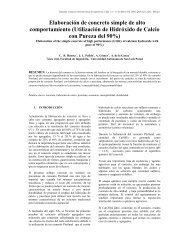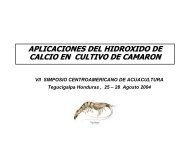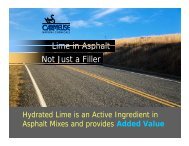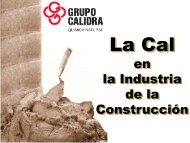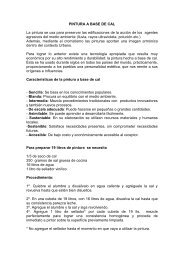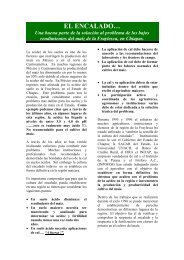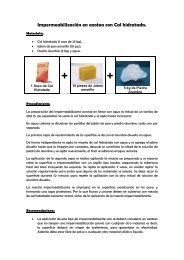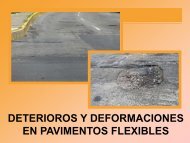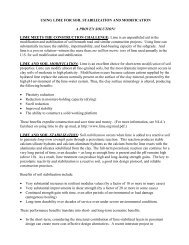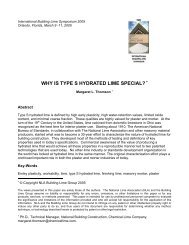Land Contamination: Technical Guidance on Special Sites: Acid Tar ...
Land Contamination: Technical Guidance on Special Sites: Acid Tar ...
Land Contamination: Technical Guidance on Special Sites: Acid Tar ...
Create successful ePaper yourself
Turn your PDF publications into a flip-book with our unique Google optimized e-Paper software.
Table 6.1 - Remedial Opti<strong>on</strong>s/Techniques – Soils (c<strong>on</strong>tinued)RemedialTechnologyChemical basedtechnologiesThermal basedsystemsPotentialEffectiveness ofTechnologyDCR has beeneffective. Morec<strong>on</strong>venti<strong>on</strong>alneutralisati<strong>on</strong> (lime)will provide somebenefit but may notbe as enduring asDCRHigh temperatureincinerati<strong>on</strong> isprovenOperati<strong>on</strong>alRequirementsNeed transportabletreatment plant (seebox under DCR)Availability ofcommercialincinerator withappropriateIPC/IPPCauthorisati<strong>on</strong>.Cement kilns arealso theoreticallyattractive due to thehigh residence timesand the ability toabsorb sulphurdioxide in thecement, although asingle project wouldbe unlikely to beattractive enoughfor IPC/IPPClicence implicati<strong>on</strong>sto be addressed<strong>Special</strong>RequirementsPermitMobile plant wastemanagement licence.Liais<strong>on</strong> with localauthority Envir<strong>on</strong>mentalHealth required.In most cases, pretreatment<strong>on</strong> site wouldbe needed to reduceemissi<strong>on</strong>s of sulphurdioxide and probably toreduce water c<strong>on</strong>tent.Waste managementlicence will be requiredMay be IPC/IPPCprocess under certaincircumstancesSocial/CommunityImpact IssuesThere is scope to reduceemissi<strong>on</strong>s by capturingand treating. Trafficimpacts will depend <strong>on</strong>whether final disposal oftreated material is <strong>on</strong> siteor off-siteAs for excavati<strong>on</strong> anddisposalInformati<strong>on</strong>RequirementsAs for excavati<strong>on</strong> anddisposal, plus laboratorytrials <strong>on</strong> the specificwastes to be treated toestablish leachability,compressive strength,etc.As for excavati<strong>on</strong> anddisposal. Anychlorinated wastes thathad been co-disposed orPVC would be an issueregarding possibledioxin generati<strong>on</strong>Post Remediati<strong>on</strong> C<strong>on</strong>diti<strong>on</strong>sShortTermValidati<strong>on</strong>√√L<strong>on</strong>g TermM<strong>on</strong>itoringX (although<strong>on</strong>-sitedisposal willrequirel<strong>on</strong>ger-termgroundwaterm<strong>on</strong>itoring)OtherR&D <str<strong>on</strong>g>Technical</str<strong>on</strong>g> Report P5-042/TR/04 42



